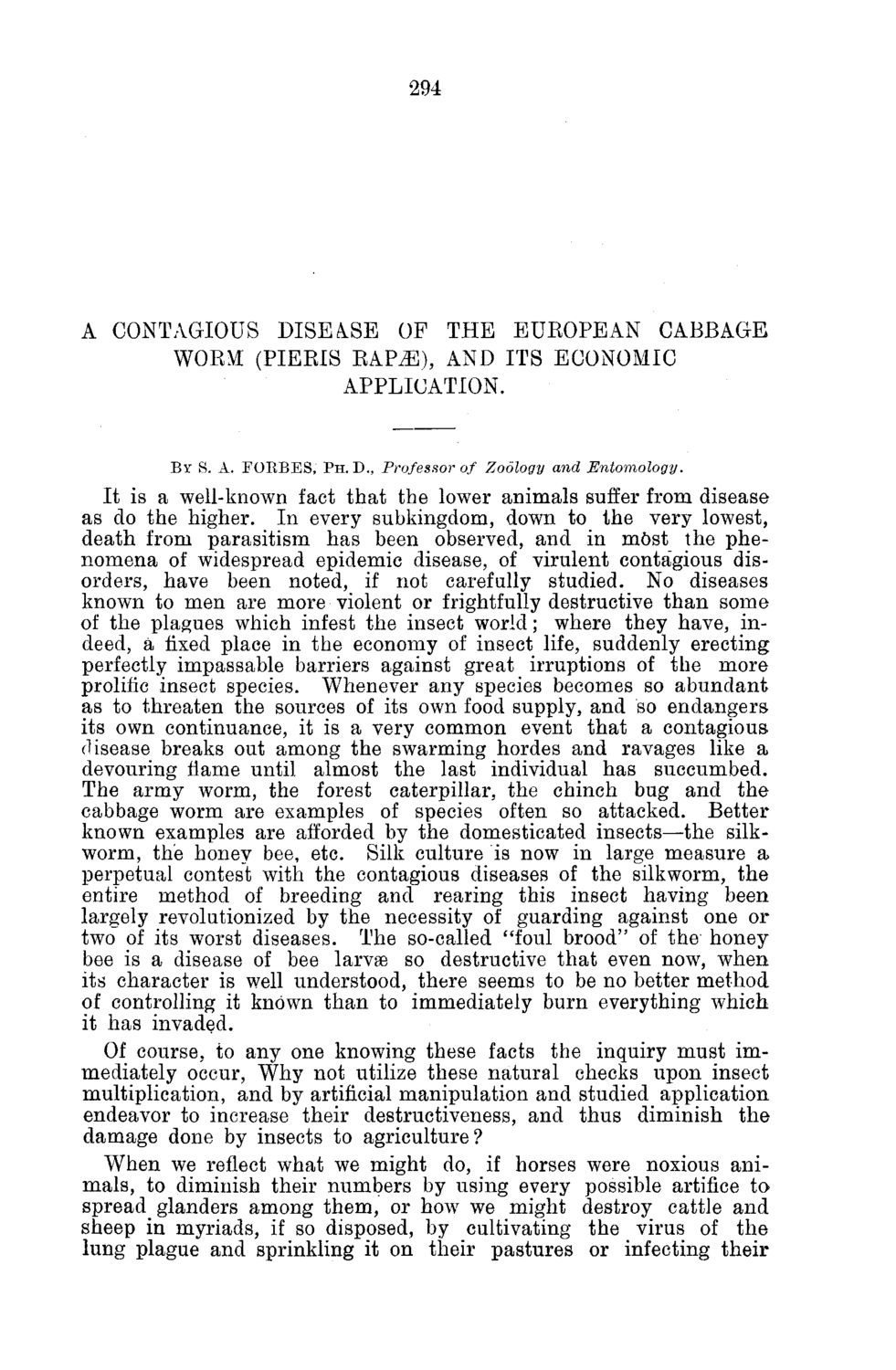| |
| |
Caption: Board of Trustees Minutes - 1886
This is a reduced-resolution page image for fast online browsing.

EXTRACTED TEXT FROM PAGE:
294 A CONTAGIOUS DISEA.SE OF THE EUKOPEAN CABBAGE WORM (PIERIS UKPM), AND ITS ECONOMIC APPLICATION. BY S. A. FOKBES, P H . D . , Professor of Zoology and Entomology. It is a well-known fact that the lower animals suffer from disease as do the higher. In every subkingdom, down to the very lowest, death from parasitism has been observed, and in mc-st the phenomena of widespread epidemic disease, of virulent conta'gious disorders, have been noted, if not carefully studied. No diseases known to men are more violent or frightfully destructive than some of the plagues which infest the insect world; where they have, indeed, a fixed place in the economy of insect life, suddenly erecting perfectly impassable barriers against great irruptions of the more prolific insect species. Whenever any species becomes so abundant as to threaten the sources of its own food supply, and so endangers its own continuance, it is a very common event that a contagious disease breaks out among the swarming hordes and ravages like a devouring flame until almost the last individual has succumbed. The army worm, the forest caterpillar, the chinch bug and the cabbage worm are examples of species often so attacked. Better known examples are afforded by the domesticated insects—the silkworm, the honey bee, etc. Silk culture is now in large measure a perpetual contest with the contagious diseases of the silkworm, the entire method of breeding and rearing this insect having been largely revolutionized by the necessity of guarding against one or two of its worst diseases. The so-called "foul brood" of the honey bee is a disease of bee larvae so destructive that even now, when its character is well understood, there seems to be no better method of controlling it known than to immediately burn everything which it has invaded. Of course, to any one knowing these facts the inquiry must immediately occur, Why not utilize these natural checks upon insect multiplication, and by artificial manipulation and studied application endeavor to increase their destructiveness, and thus diminish the damage done by insects to agriculture? When we reflect what we might do, if horses were noxious animals, to diminish their numbers by using every possible artifice to spread glanders among them, or how we might destroy cattle and sheep in myriads, if so disposed, by cultivating the virus of the lung plague and sprinkling it on their pastures or infecting their
| |